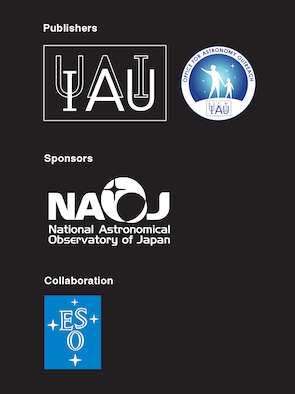|
Editorial (page 03)
Pedro Russo
A scientific conference is an opportunity for researchers to present, share and discuss
their work and findings. Together with scientific journals, conferences are the most important
channel for the exchange of information between researchers. Besides providing
a forum for discussion and the sharing of ideas to the education and public outreach
(EPO) community, conferences also provide a way to bridge the gap between our community
and fellow scientists.
Over the last few years, mainly due to the International Year of Astronomy 2009 (IYA2009),
several astronomical conferences have incorporated EPO sessions in their programmes.
In this CAPjournal issue, EPO sessions take the limelight: Marta Entradas and Steve
Miller provide background information about EPO sessions at scientific conferences and
examine the recent European Planetary Science Congress. Ian Robson and our regular
contributor Ryan Wyatt report on the IYA2009 session at the European JENAM2009 and
on the Astronomy Visualisation Workshop 2009, respectively. Also, Pamela Gay and
friends share tricks and tips on how to use new technologies to bring online audiences
into the conference rooms together with the scientists and professionals.
Last April we enjoyed a good example of how new technologies help us in our duty to
share scientific achievements with society at large. For the first time, and in the framework
of IYA2009 and its Cornerstone project 100 Hours of Astronomy, 80 world-class
astronomical research facilities were linked in a webcast, called “Around the World in
80 Telescopes”. Over the course of 24 hours, astronomers, engineers, educators and
communicators shared their findings, discoveries, and the hi-tech machines that peer
into our Universe and provide clues to understand, it with over 170 000+ people. Our
feature-length article will give an insider’s view into the processes that went on behind
the scenes to produce this impressive webcast.
Also in this issue, Brother Guy Consolmagno shares useful hints for working with journalists,
Matthew McCool gives us some techniques for explaining the cosmos in a
clear way and Thomas Baekdal helps us connect with our audiences in the new media
jungle...
Between issues you can stay in touch through our website, www.capjournal.org, where
you will find the current issue in PDF format, an astronomy communication and education
job bank, submission guidelines and back issues.
We also welcome astronomy and science communication events (conferences, meetings,
etc.), training opportunities, job postings or courses offered. If you have astronomy
and science communication-themed products such as books, DVDs, television programmes,
magazines or websites that you would like to see reviewed by the CAPjournal
editorial team, simply send the necessary information to: editor@capjournal.org. This
is also the address to send any questions, comments or opinions. We’d love to know
what you think!
Happy reading,
Pedro Russo
|

